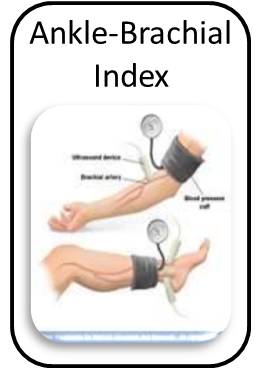
ABI - Ankle Brachial Pressure Index Measurement Did you know your ankle, of all places, may have something important to reveal about your health? An ankle-brachial index test is an easy way for your doctor to check how well your blood is flowing. They would use this test to check for peripheral Artery Disease, or PAD. This means you have blockages in the arteries of your arms and legs. This slows down your blood flow, and your limbs don’t get as much of the oxygen they need. If you have PAD, you’re more likely to have a stroke or heart attack. The test compares the blood pressure at your ankle with the blood pressure at your arm. The results can help you decide whether you need to make changes to your lifestyle or take medicine.
When Do I Need the Test?
You might need the ankle-brachial index test for a few reasons: 1. Your chances of PAD are higher than normal. You’re more likely to get PAD as you get older. Even if you don’t have any symptoms, you may want to get the test if you’re 70 or older. You’re also more likely to have this kind of low-flow problem if you’re 50 or older and you have any of these.
A history of smoking
Diabetes
High Blood Pressure
High Cholesterol
2. You have symptoms of PAD. The main thing you may notice is pain in your legs when you walk or climb stairs. They might feel heavy, numb, or weak. You may also have these symptoms: Less hair on your legs than normal One leg feels colder Skin looks pale or kind of blue Sores on your toes, feet, and legs that don’t seem to heal Toenails grow more slowly than they once did Trouble getting an erection, often in men with Diabetes 3. You already know you have the condition. If you know you have PAD, your doctor might use the test to see how your treatment has worked so far. What Happens The test lasts 10 to 15 minutes, and is Pain free. Cost This is a Bulk Billed service


